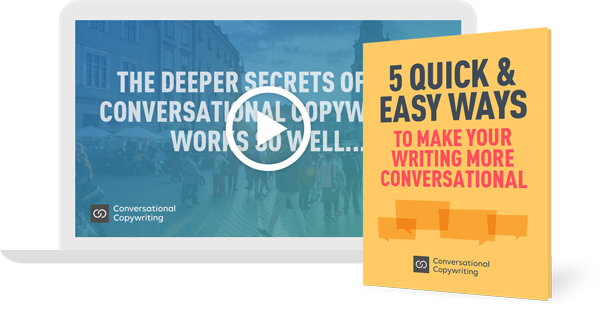
Back in the 1980s, I worked for an ad agency where we did a lot of work with pharmaceutical companies.
A significant part of our clients’ budgets went into the creation of the print materials their salespeople used when visiting doctors.
And the key focus of those materials was on how to overcome objections. Overcoming objections was core to the way these salespeople were trained. Identify the objections… take out the relevant products sheets or brochure… and then use that information to change the doctor’s mind.
The approach was essentially adversarial. The salespeople had to “overcome” objections. They had to fight for the sale. They had to close the sale.
This adversarial approach to selling was pervasive.
Whether you were selling pharmaceuticals, office equipment, real estate or automobiles, salespeople were following the same path back then. Their job was to identify objections and find ways to knock them down.
The same mindset was found in the way copywriters were trained.
We were taught how to structure our sales copy in the same way… seeking out objections and then overcoming them, one bullet point at a time. Many copywriters and marketers are still taking the same approach today. I see this same underlying structure at work on sales pages and even within emails.
Which is odd, because the psychology and science of selling have long since moved on. There are now much better ways to close the sale.
Welcome to the world of Conversational Intelligence.
Judith E. Glaser is an author, academic, consultant and organizational anthropologist.
She’s also the author of the book, Conversational Intelligence.
Coincidentally, many years ago, her first consulting client was also a pharmaceutical company, Boehringer Ingelheim.
When she started working with them their sales force rated 39th out of 40 in a league of global pharma companies.
Their losing approach? The same as when I was working with pharma clients. It was adversarial, based on identifying objections and then trying to persuade doctors to change their minds.
By the time Judith had completed her contract with them, Boehringer had moved up to 1st place in the ranking. From 39th to 1st. Not bad.
How did she do it?
She did it by increasing the conversational intelligence of the people in the sales force.
She taught them to listen, to respect the views of the doctors, to be on the side of the doctors, and to offer solutions that actually helped the doctors achieve their most important and heartfelt goals.
Basically, she taught them to earn the trust of the doctors they visited. And with deeper trust came increased sales.
It was all about conversation, respect, and trust.
And yes, there’s plenty of science to back this up.
Glaser spent 3 decades researching the Neuroscience of Conversations, and gave this body of work the name Conversational Intelligence. Here are some amazing insights that are life-changing for people in sales …
Using an fMRI scan (functional magnetic imaging), you can measure people’s brain activity while they’re in conversation.
It turns out that when you get into “overcoming objections” mode, or try to change people’s minds, the other person’s amygdala lights up like a Christmas tree.
The amygdala is the old part of our brain. It’s where our fight or flight responses are triggered.
If you get adversarial with someone, and try to change their minds, you’re basically triggering their desire to fight or fly.
And that’s how your sales team ends up being ranked in 39th position.
If, on the other hand, you stop being adversarial and enter into a respectful and helpful conversation, a quite different part of the brain lights up; the prefrontal cortex.
The prefrontal cortex is involved in personality expression, moderating social behavior, and decision making. It’s the “thoughtful” part of our brain.
In other words, if you want to make a sale, this is the part of the brain you want to stimulate.
Which brings us back to Conversational Copywriting.
Funny thing.
I’ve been practicing conversational copywriting for over 20 years, but only put a name to what I was doing about 18 months ago, when I first created my Conversational Copywriting course.
And then – about 10 days ago – I discovered Judith Glaser’s book, Conversational Intelligence.
My mind was blown!
As I read through her book, I realised for the first time there’s a ton of science behind the claims I make for conversational copywriting.
Old-school, in-you-face, adversarial copywriting and marketing have had their day. Truth be told, they didn’t work particularly well even in the days before the web.
Online, the weakness of the objection-crushing approach is even more pronounced.
The web, by its very nature, is a deeply social and conversational medium.
Online, the only way to gain the trust of your prospects – and drive more sales – it to take the more respectful, conversational approach.
Which is why, as I have said many times before, conversational copywriting is the future of selling online.
NOTE: If you’d like to add the craft of conversational copywriting to your online writer’s toolbox, find out about the Conversational Copywriting course here…
